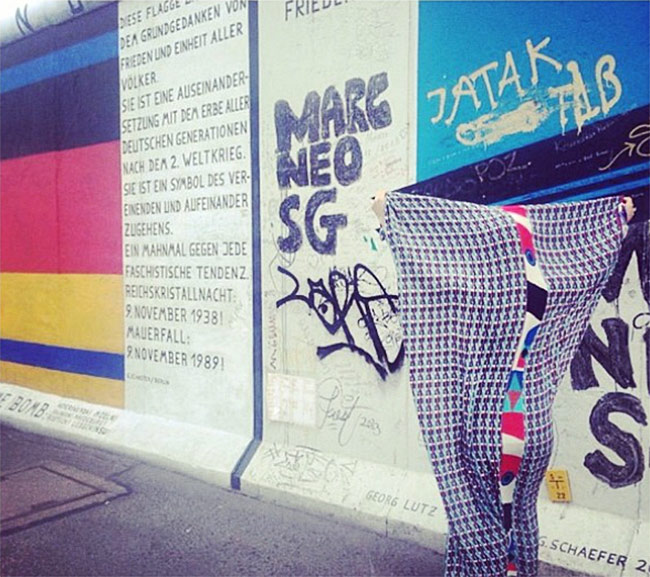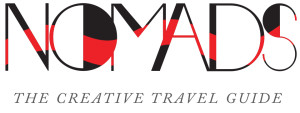A Peace Treaty
Fashion Without Borders
Fashion designer Dana Arbib, shares her global perspectives on life and style.
Interview by Lauri Lyons
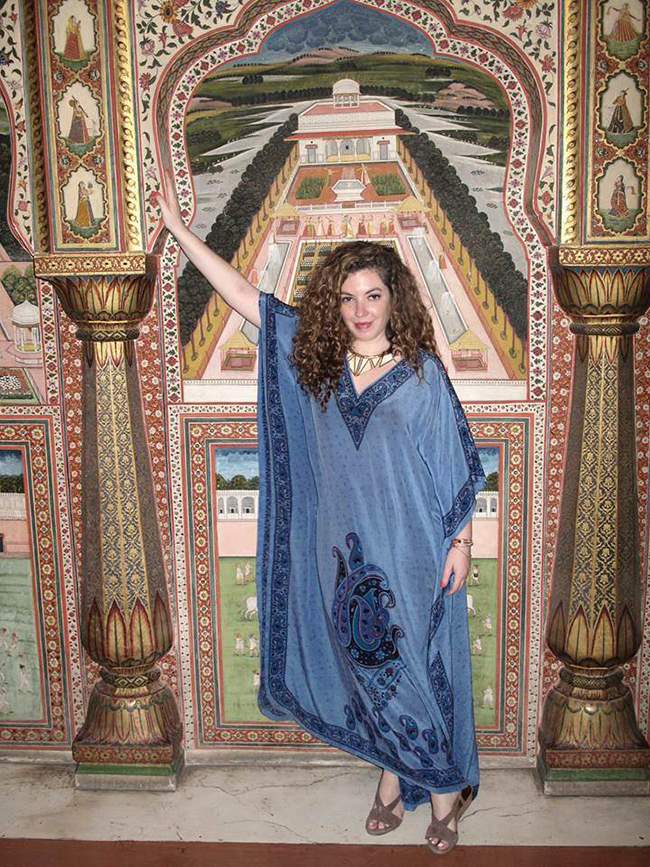
What inspired you to start A Peace Treaty?
Dana Arbib: I studied graphic design at Parson’s. I was working in a lot of different fields of design. I was consulting at Sotheby’s, and freelancing at DKNY. I always liked sketching, and I realized that I love drawing patterns, it’s so much fun, it’s so easy, it’s so creative.
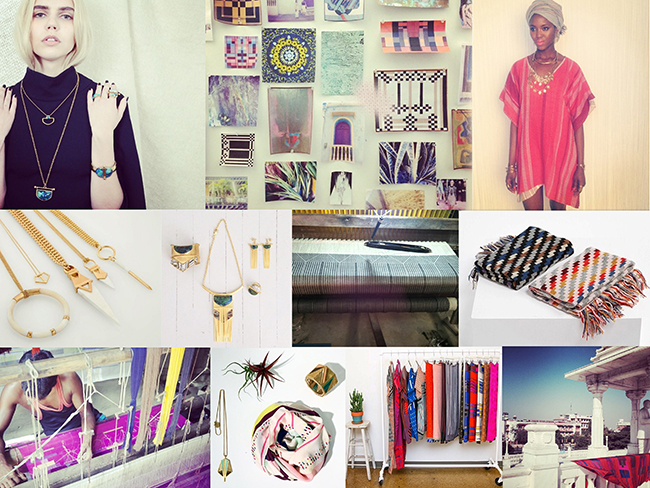
What is your cultural background?
I’m middle-eastern. My dad’s from Tripoli, Libya. He grew up in Tripoli, but he went to school in Italy because Libya was an Italian colony at that time. So he’s kind of a blend of Italian, and Arab, but Jewish. His generation is pretty much the last of the Libyan Jews. Once his generation passes away, it’s kind of gone. I’m from Israel. So we’re kind of like Arab Jews in a way, which is complicated.
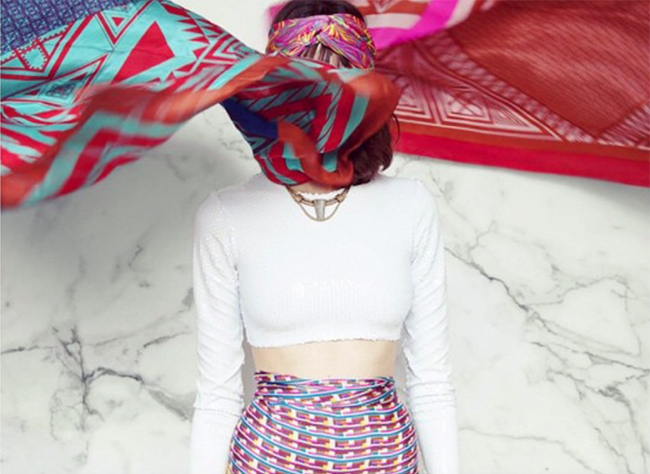
How has your culture influenced your design aesthetic?
I grew up with a lot of scarves, a lot of caftans, that kind of style. I had seen that when the company started, there was a trend in the market for kofia scarves. I realized there was a gap in the market for mid-level price scarves. That’s when I said “Let’s do a scarf company”. I’m constantly researching textiles from all over the world. It’s kind of an obsession of mine. I have a huge database in my head of references from Africa, Asia, Scandinavia, Japan, from everywhere. I’m traveling constantly.
My dad, for a living, has a humanitarian background. He does a lot of peacekeeping missions all over the world. I always knew I wanted some aspect of the company to be involved with giving back, fair trade, or working with people in different regions of the world. That’s how the idea came together.
Where are you usually traveling to?
I was born in Israel, so I go to Israel quite a bit. Israel still has really good markets where stuff is not made in China yet. The thing that depresses me a lot is you travel to Turkey, you travel to Morocco, and everything is made in China. Israel still has some areas where you can find authentic nomadic made stuff. That’s nice.
I go to Italy quite a bit because I grew up going there. The fashion that comes out of Italy is really authentic. That tradition is still there. The Missoni family is very inspiring. They produce everything under the same roof. Their house is attached to their factory. It’s a part of their culture. Italy never changes. It’s always the same crackhead on the same street corner. It’s so consistent in that way. There are things about Italy that are a nightmare, but I love Italy.
Do you speak Hebrew and Italian?
I speak Hebrew and my French is getting better and better. My dad and mom speak Italian, Hebrew, and English together. My dad also speaks Spanish and French. When I was a child, I was constantly confused about language. I didn’t start speaking until I was 3 years old. When I left Israel I was nine and I moved to Canada. Then I had to learn how to speak English. For some reason my Hebrew got worse. It was a complicated transition.
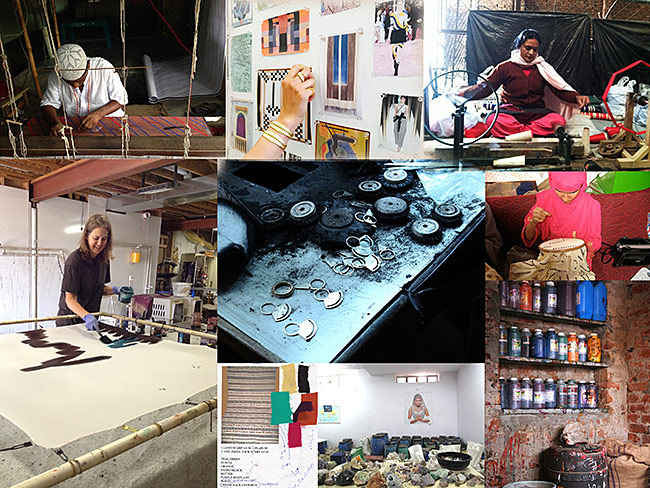
Why did you begin traveling to find traditional artisans and techniques?
From the beginning, it has always been about what I want to design and then finding which country has a rich traditional history, in producing that kind of textile. So, Pakistan was the first country A Peace Treaty visited, because of their hand weaving and block printing. Then Afghanistan happened because I read an article about this NGO, Afghan Hands. I randomly just e-mailed the founder and said, “We would love to do a project together”. We worked with women who embroider burkas. They sit home and embroider scarves, and the money they make pays for their children’s education.
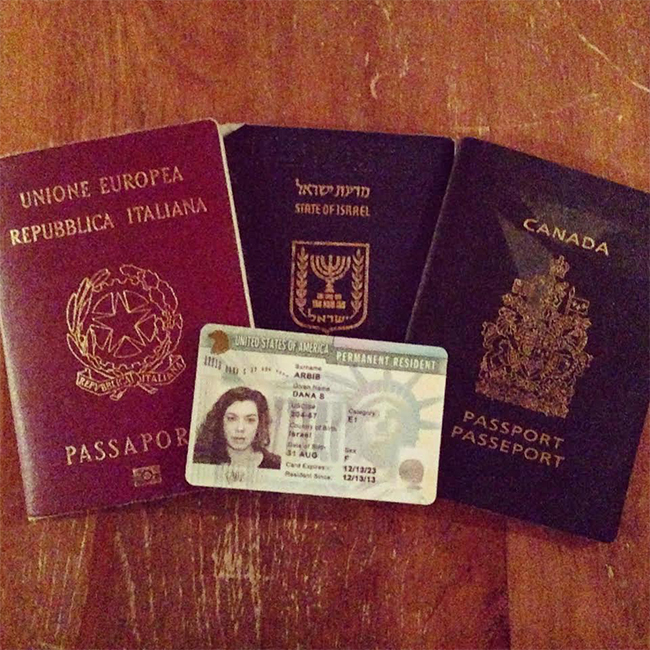
You’re traveling on an Israeli passport?
I think the biggest challenges are national borders. Don’t think that you can just go anywhere and travel at your own risk. You have to be smart about where you’re going. I’m Israeli so I can’t go to a lot of countries. I have three passports, but they all say “Born in Israel”. So there’s a roadblock with a lot of that. I find other people to go on the ground in the countries I can’t travel to. There’s always a way around it.
What is on your mental checklist for prepping to travel?
Visas are a nightmare. For some reason, it’s the biggest nightmare. Sometimes it takes two weeks to get a visa, sometimes it takes four months. You never know. So you can never buy your ticket early, you have to wait and keep guessing. I’m not American, I have a green card. So because of that, it takes longer for me to get a visa.
For the production prep work I arrive with a lot of references, a lot of different colors. Every country has it’s own interpretation of what red is or what pink is, so I bring a lot of different references for that. A lot of it is just hitting the ground and figuring it out when you’re there.
What are some of the surprising experiences you’ve had when you actually show up in these locations?
The biggest thing is the weird fine line between being diplomatic and getting things done. Culturally as well. You don’t know how to not hurt someone’s feelings or step over the boundary. I always want to make sure that I don’t cross that line, but it’s hard because different cultures react to different things, in different ways.
Also, a big shock is when you travel to a place like India, and there’s a wedding, so the office is closed for ten days. There are so many holidays, it’s unbelievable. You get used to being on the ground and saying, “What do you mean you can’t meet me? I’m here in India waiting for you. I’m here for that reason!”
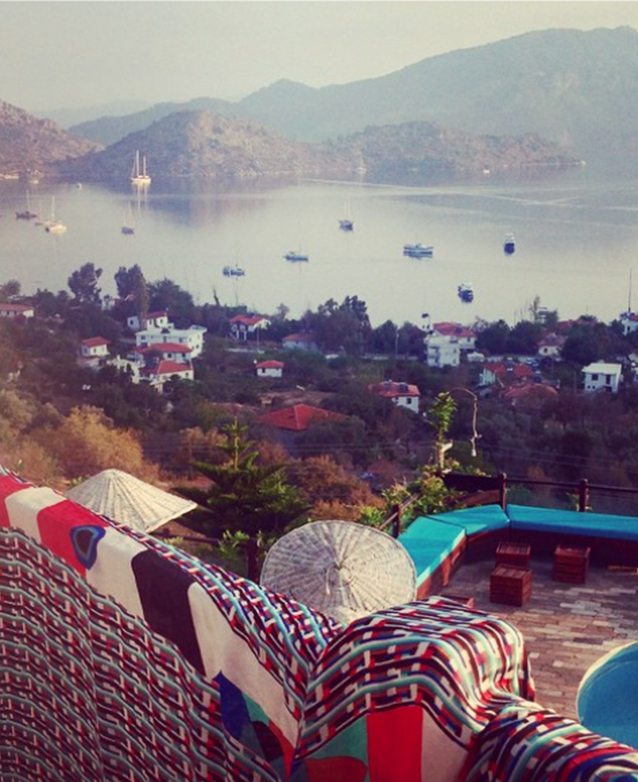
How do you spend your free time in these places?
The last time I went to India I had a really good time. Fashion people all go to India at the same time to produce, because there’s a fashion calendar. So you run into a bunch of different people. Jade Jagger was staying in my hotel, so I hung out with her. We partied and went to different restaurants, and I met a local crew that we became friends with. It’s nice to build a network in different places.
What place has been the most culturally challenging for you?
I think is India for sure. I’ve been to Ethiopia and that was less shocking than India. I think it’s because of the amount of people, the heat, the food, how long it takes to get somewhere, and how to talk to people. Also, I was getting stared at alot, because I look so different than everybody else. Despite being overpopulated, there’s been some moments when I’ve seen really beautiful things that I’ll never forget. When we first drove into Rajasthan (that’s where all the gypsies are from), there was a caravan of gypsies and they were singing and wearing these neon silk saris. It was really beautiful. Memories like that I’ll always remember.
What are some of the adventures you’ve had while finding the types of materials you’re going to work with?
Peru is really easy to work in because everything is so sustainable and they’re farming the alpaca themselves, shearing the alpaca, dying the yarn, and they get it to the factory. Everything is sourced in Peru from start to finish. The Afghanistan project was really difficult because there’s no fabric from Afghanistan that we can source. We had to source it from Pakistan, then get it driven across the border to Afghanistan. In India they can source everything themselves. Everything is really sustainable in Nepal as well. Those are the main countries we’re working with right now.
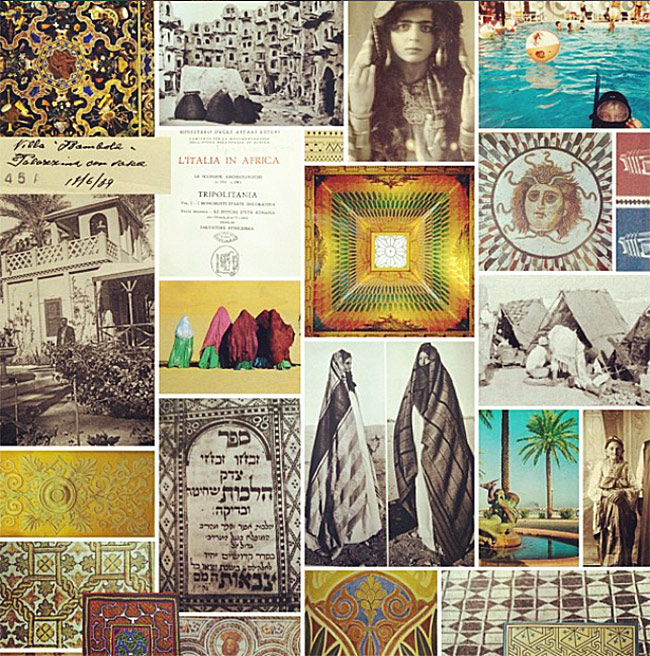
What is it like to work with women to produce your designs?
In Nepal there are women that we work with. In Afghanistan it was all women. They’re very professional. It’s great, but sometimes I feel like if I were a man and being tough, it would be different. In some of countries where we work, they don’t understand a woman being tough, in some ways.
Is communication for quality control challenging?
It’s literally like I’m sending them maps. It’s like information design. There are keys and arrows everywhere. It’s mind-blowing. I give the most information possible, in the clearest way possible. My English is very broken in e-mails, and my writing has become horrendous. I write, “Need, now, this!” I now understand what’s the easiest for them to understand. I’m sleepless some nights, but at the same time I know it’s out of my control.
How do you manage your time and energy, while producing in so many countries?
I want to find people that will work for us on the ground, so I don’t have to travel all the time. I have a girl on the ground in Jaipur, so I Skype with her. It’s about finding different people to go to different places. I would go to new countries, but I think it’s better to have people that are very excited to go to these places and maintain that relationship. I can’t run a business and be traveling the whole time. I design everything, I know what I’m good at, and where I’m supposed to be. That took a while to figure out.
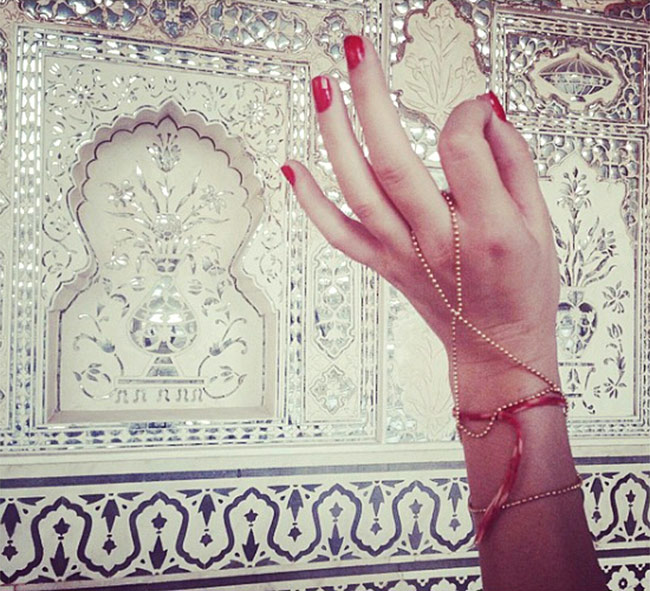
When did you notice the public response to your work picking up?
Two weeks after we launched our site, because DailyCandy wrote something about us that went out to every editor. We get orders from people in Afghanistan, Iran, Japan, France, Canada, everywhere. Australia is big. We will notice, “Oh, that’s weird, we got a lot of orders from France today”.
You lived in Canada before moving to New York?
I went to high school in Toronto, I lived there for ten years. I always compare America to Canada in this way: when an immigrant comes to America, they want to be American. That’s their dream. When an immigrant comes to Canada, they stay who they are. They stay Moroccan, they stay Bangladeshi, they stay Pakistani. Whereas here in America, they get a little watered down because they want to become American. In America they want to fit in, they want to be accepted. It’s two different worlds.
Did you feel any big cultural differences between Canada and America?
Yeah. I didn’t know that my parents were kind of hippie, until I moved to America. The political landscape here is so intense compared to Canada. Race relations are not even something you think about in Canada. If I had Muslim girlfriends growing up, I don’t think I even knew they were Muslim. It wasn’t even something we discussed. In America it’s in your face, one of the first questions. So, that was completely shocking to me. It’s like a web. It’s really complicated.
After I moved here, September 11 th happened, so that was really shocking to me. I was looking through rose colored glasses when I was living in Canada, before coming here and realizing the harsh reality of it all. My parents are still in Canada and they’re still not left or right. Here, you’re either one direction or the other. So, I’d say that’s a huge difference.
What do your parents think about your work and the places you’re going?
My dad is constantly calling me saying, “I know someone in Somalia that can produce!” Everyday he thinks of a new country, someone I should work with, someone I need to talk to. My dad’s mind is everywhere, constantly all over the world.
Where do you want to go for your personal vacations?
I want to go to Japan, and Jamaica! That’s the number one’s on my list right now. I go to St. Martin a lot, which is Caribbean and they speak Patois and play reggae, but I need to go to Jamaica. The one thing that scares me about Jamaica is the whole “We hate gays” movement. It’s a little intense for me. I mean if the Vatican can accept it…
Cuba is one place I’ve been many times throughout my life. Canadians go to Cuba like Americans go to Miami. I don’t stay within the walls. I would see the country and meet locals. My dad says, “You should start working in Cuba right now!” I’ve realized that I’m getting to the age where, I don’t want to travel somewhere that I’m suffering the whole time.
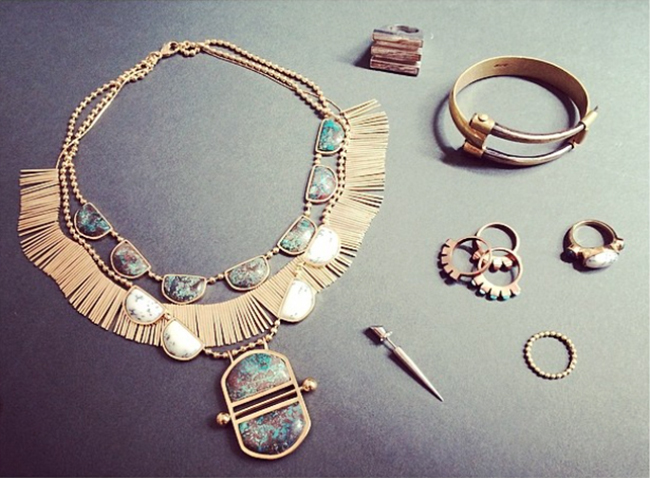
What are your “must haves” when you travel?
Scarves and caftans, because a lot of places you go, you have to cover yourself up. When I travel, it’s like I’m literally wearing scarves around my head, Indian pants, and t-shirts every day. It’s so hot that you can’t wear anything else. I think a linen button-down shirt is a must, wherever you go. I’ll take a scarf and wrap it around my head in India, and in the Caribbean I’ll put it on at the beach, as a wrap. Jewelry is always great because you can bring really simple clothes and just put on jewelry, and it adds a punch line.
Do you have any strange travel habits?
I’m a little bit superstitious in a weird way. So, I always have the same necklace on thinking, “This is my good luck necklace and I have to wear it every day”. I convince myself that it has to happen that way. I always wear the same outfit on the airplane: It’s a black t-shirt with my Adidas track pants, with my sneakers and favorite sweatshirt, because I know what’s comfortable. It’s my good luck thing.
On the plane I always have a scarf because I want to wrap my head, because I have this thing about the seat being dirty, and putting my face on it. You’re getting down to the core of craziness now. I’m the crazy person on the airplane. My whole face is wrapped in a scarf, so you can’t see anything but my eyes. I’m the person who stretches in the aisle, like, does yoga. I am the crazy person on the airplane that everybody looks at and thinks, “Oh God… ”
